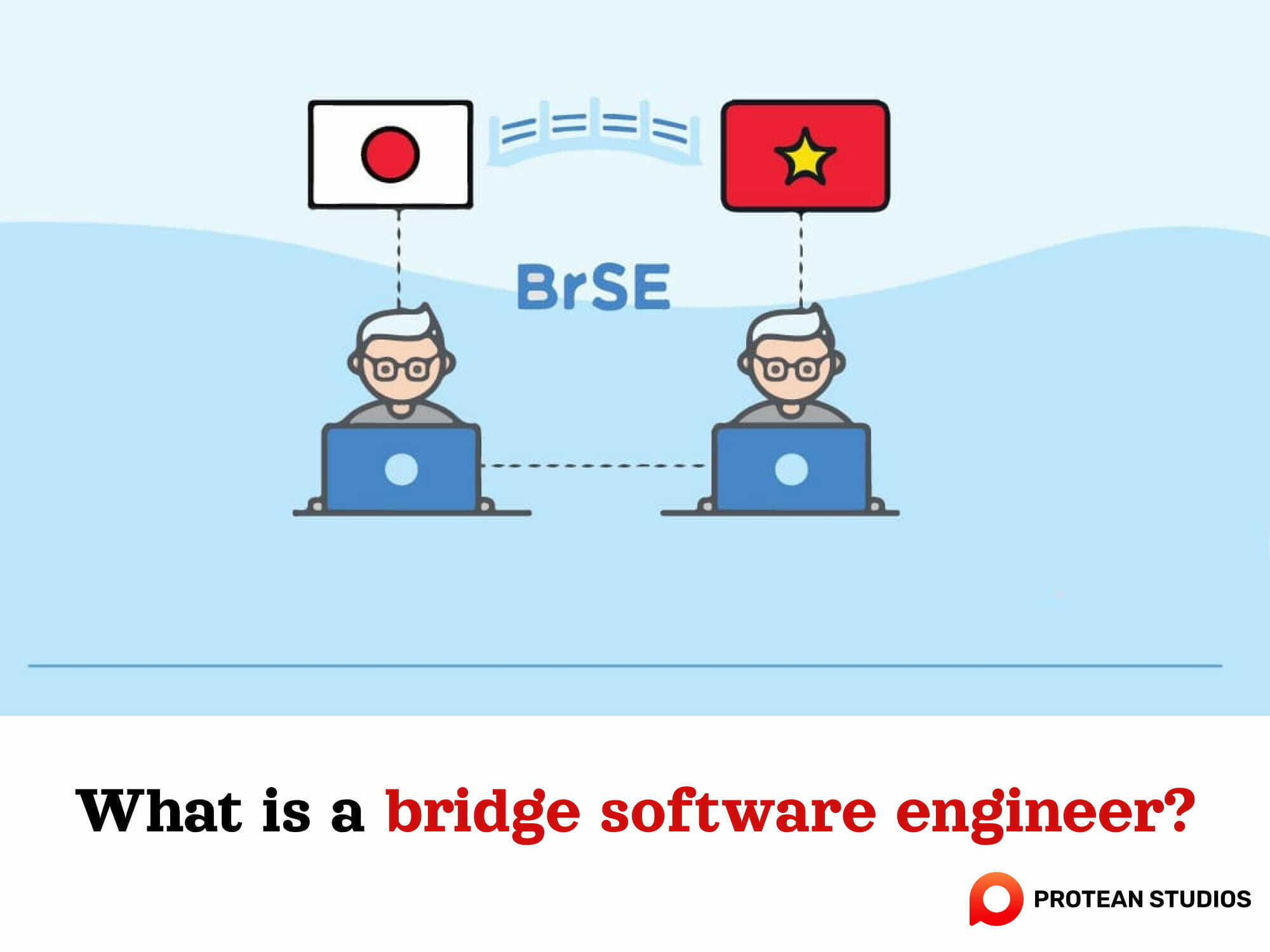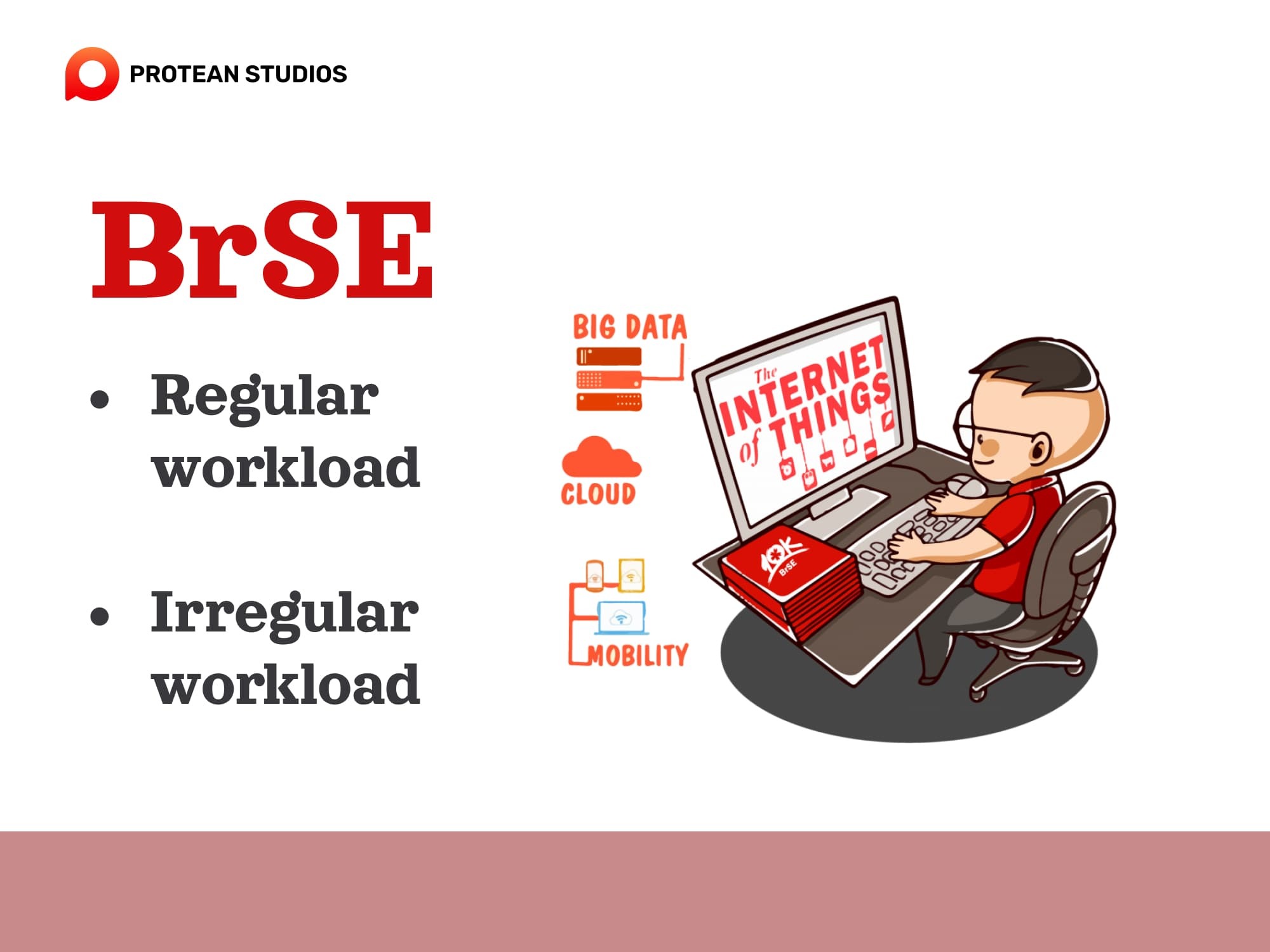Vietnam's IT industry has made great strides in recent years. Many foreign technology companies, especially Japanese, are establishing themselves in our country. Thus, the demand for a bridge software engineer (BrSE) is increasing. What is BrSE? In the article, we will provide information about this position and what duties they need to perform.
I. What is a bridge software engineer?
A bridge software engineer (BrSE) is a person who works with customers and handles connecting and communicating customer requirements to technical implementers. They will ensure that both parties understand each other and can cooperate on each project.

When communicating customer requests to the home team, BrSE will act as the customer's representative. But when problems arise during project implementation, BrSE acts as a representative for the IT team to negotiate solutions and convince them.
II. Why does an IT company need to use BrSE?
An IT company needs BrSE because it can help them improve customer satisfaction, reduce development costs, and expand their global market. By employing a BrSE, the IT company can ensure meeting the client's needs and expectations and resolving any issues or changes.
Thus, IT companies can improve communication, ensure technical accuracy, and manage offshore development projects. This led to improved project outcomes, increased client faith, and reduced costs.
Besides, it also helps the IT company adapt to the different cultures, languages, and business practices of the client's country or region. Thanks to bridge software engineers, they can understand what clients want and complete projects better.
III. The job of a bridge software engineer
BrSE is a special job that demands a lot of tasks below.
1. Regular workload
Bridge software engineers have different jobs depending on the business field of the enterprise. Yet, most people need to do various daily duties, including:
Communicating with clients to collect their requirements, offer guidance, and answer project-related questions.
Attending meetings with clients and developers to share progress, solve problems, and adjust plans as needed.
Manage and process emails and customer communications.
Make a daily plan.
Follow up and ensure project progress.
Work evaluation for clients and leaders
Report on project progress.

2. Irregular workload
In fact, the job of each bridge engineer will change when starting a project. At the same time, it will also be different in each specific phase of the project. We will divide the detailed work as follows:
Start the project: BrSEs contribute during the project initiation phase by conducting thorough research. They analyze project requirements, identify potential challenges, and take part in planning sessions to ensure a comprehensive understanding of the project's scope and objectives.
Project execution: manage and check specific project activities; change strategies and methods to increase productivity and project quality.
Closure projects: summary and testing of products before sending them to customers. Sometimes, they also perform various types of testing, such as functional, performance, compatibility, security, user interface, and system testing for products.
Emergency Support: Bridge engineers may need to address urgent software issues during off-hours or weekends. For example, system outages that disrupt business operations, server crashes that render services unavailable, or cybersecurity breaches that threaten sensitive data.
The work at BrSE is quite difficult and requires engineers to be flexible and sensitive. The goal is to adapt to each specific condition and situation to achieve high work efficiency.
Learn more: Hotspots For Leading Offshore Outsourcing Countries In APAC
IV. How to Become a BrSE
To become a Bridge Software Engineer (BrSE), you need to have a bachelor’s degree in computer science, information technology, or a related field. You also need to have at least 2–3 years of experience in software development. Fluency in Japanese is a must-have skill for this job.

You can also take training and certification programs to improve your skills and increase your chances of landing a job as a B.S.E. To land a job as a BrSE, you need to have excellent communication skills, problem-solving skills, and the ability to work well in a team. Besides, you need to have some skills to do this work more efficiently.
Communication skills: The ability to express oneself to both customers and development teams. Thus, they need active listening, presentation, negotiation, and problem-solving skills.
Analytical Skills: Expertise in examining customer requirements, finding optimal solutions, and assessing the advantages and disadvantages of different options. They need to use analytical tools and techniques such as UML, ERD, DFD, etc.
Management Skills: Capability in managing projects, including planning, resource allocation, progress monitoring, quality assurance, and effective problem resolution, often applying methodologies such as Agile, Scrum, and Kanban and using tools like Jira, Trello, and Slack.
Learning Skills: The ability to keep up with the changing knowledge and skills in the information technology field by sourcing and synthesizing information from reliable sources. For example, books, newspapers, blogs, forums, and engaging in continuous learning
To learn more about how to become a good BrSE, you can see it via the blog: How To Become A BrSE: A Step-By-Step Guide
V. Wrap-up about the BrSE
In conclusion, bridge software engineers play a pivotal role in the success of projects, particularly in the dynamic and ever-evolving landscape of the IT and offshore markets. BrSEs are essential for bridging the gap between clients and developers, ensuring clear communication and effective technical solutions. They have diverse roles, responsibilities, and salaries that depend on their experience level.
With their versatile skills and adaptability, BrSEs are ready to shape the future of project management, technology integration, and client satisfaction in these dynamic fields.




